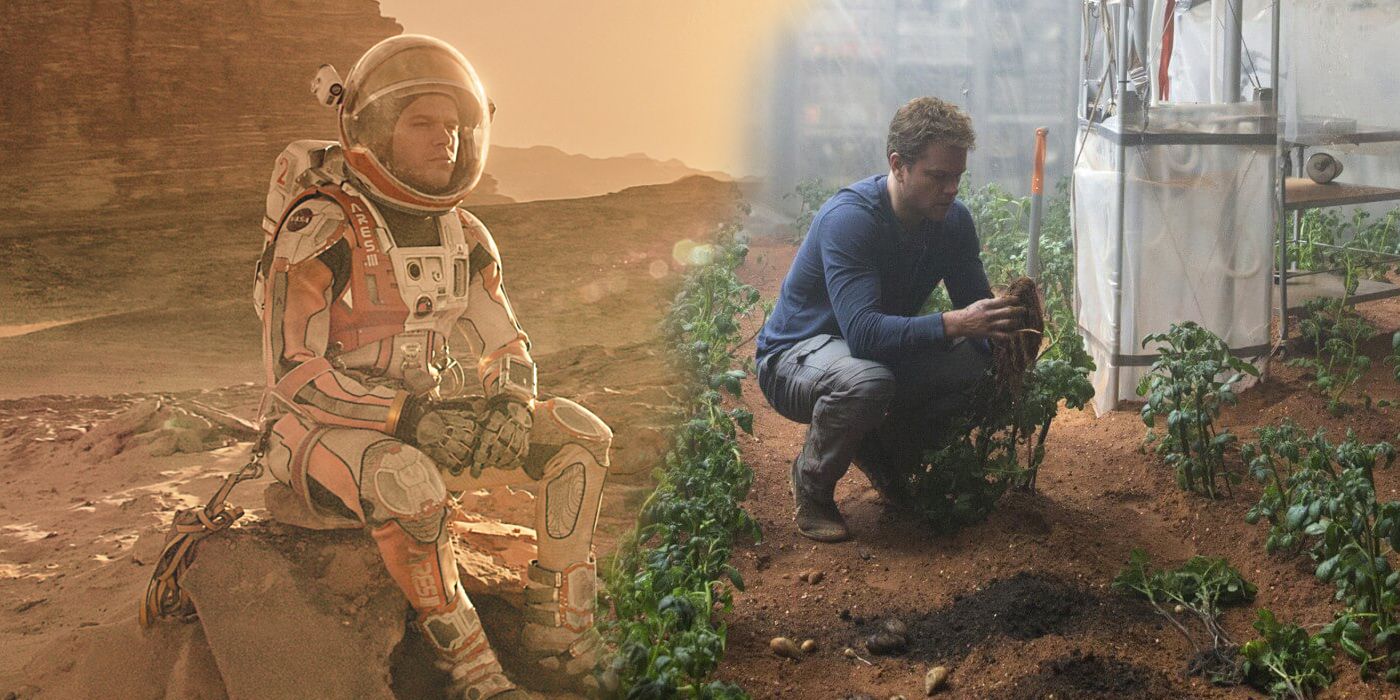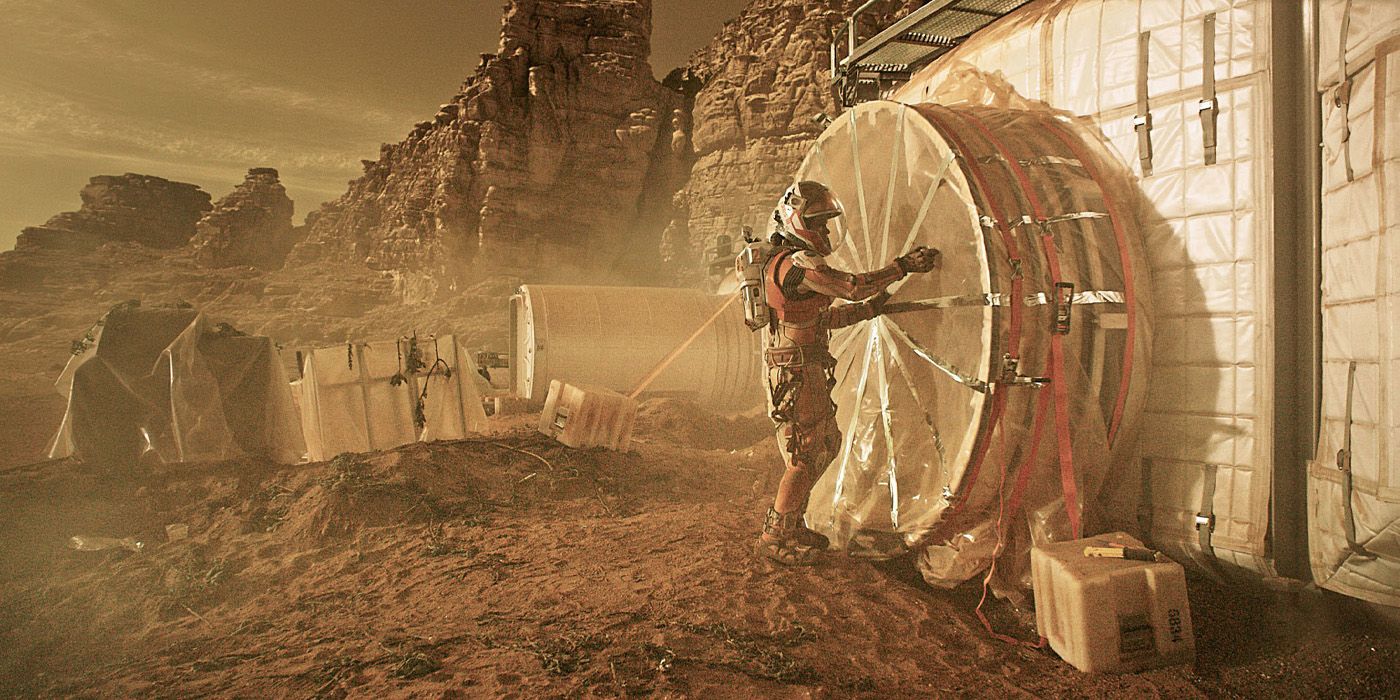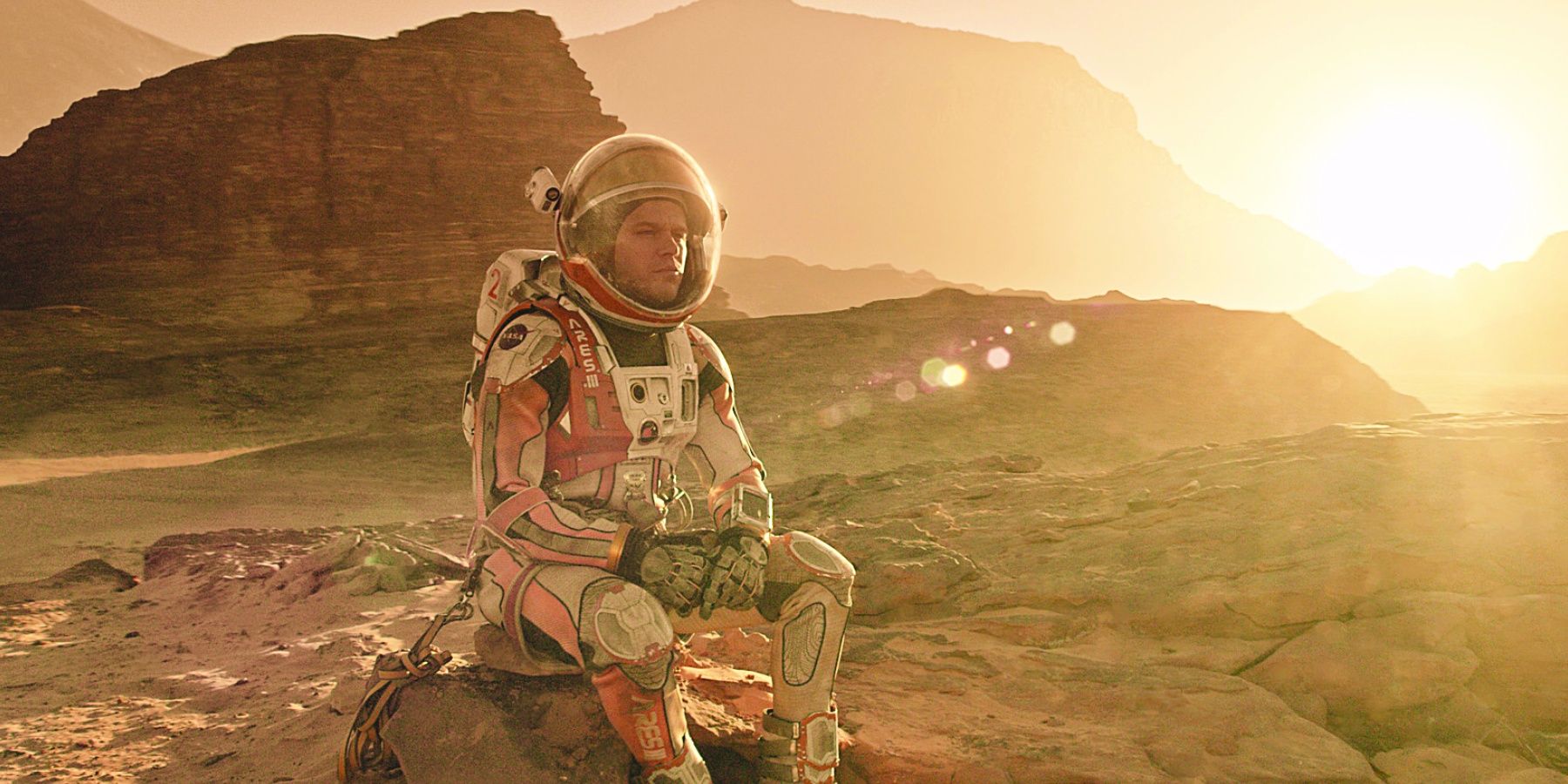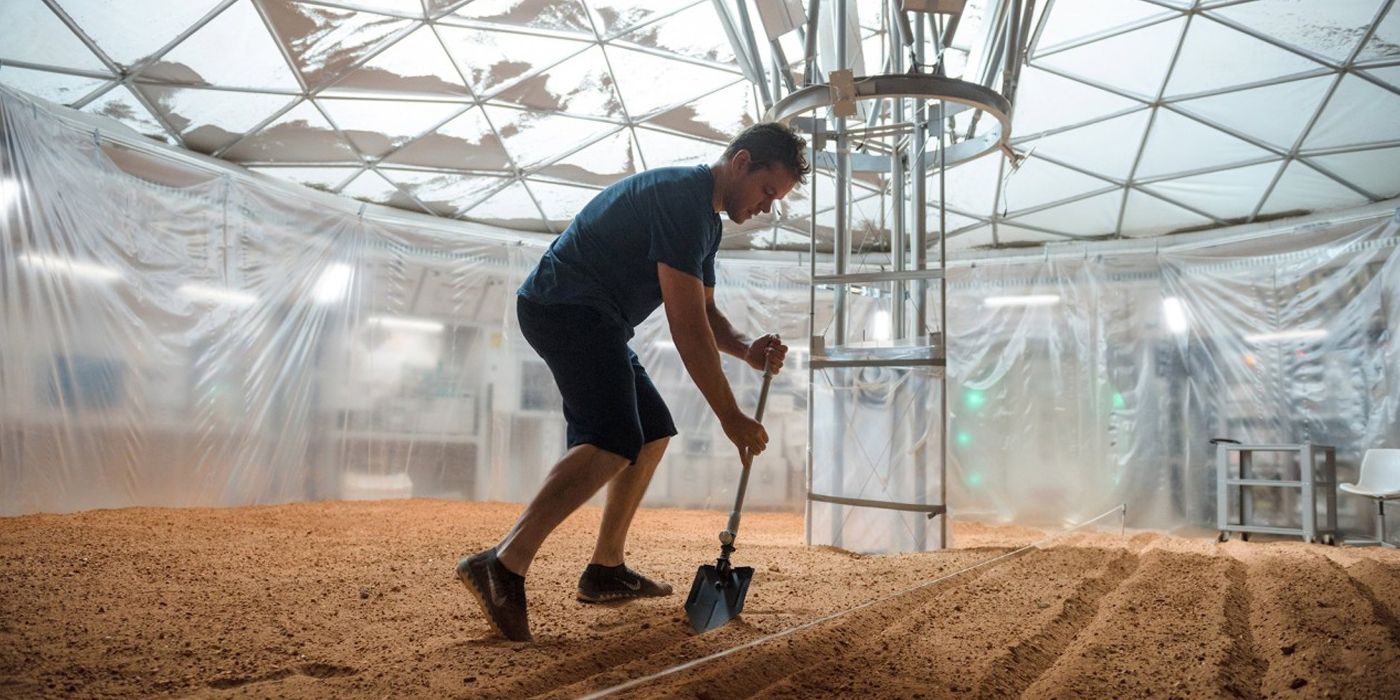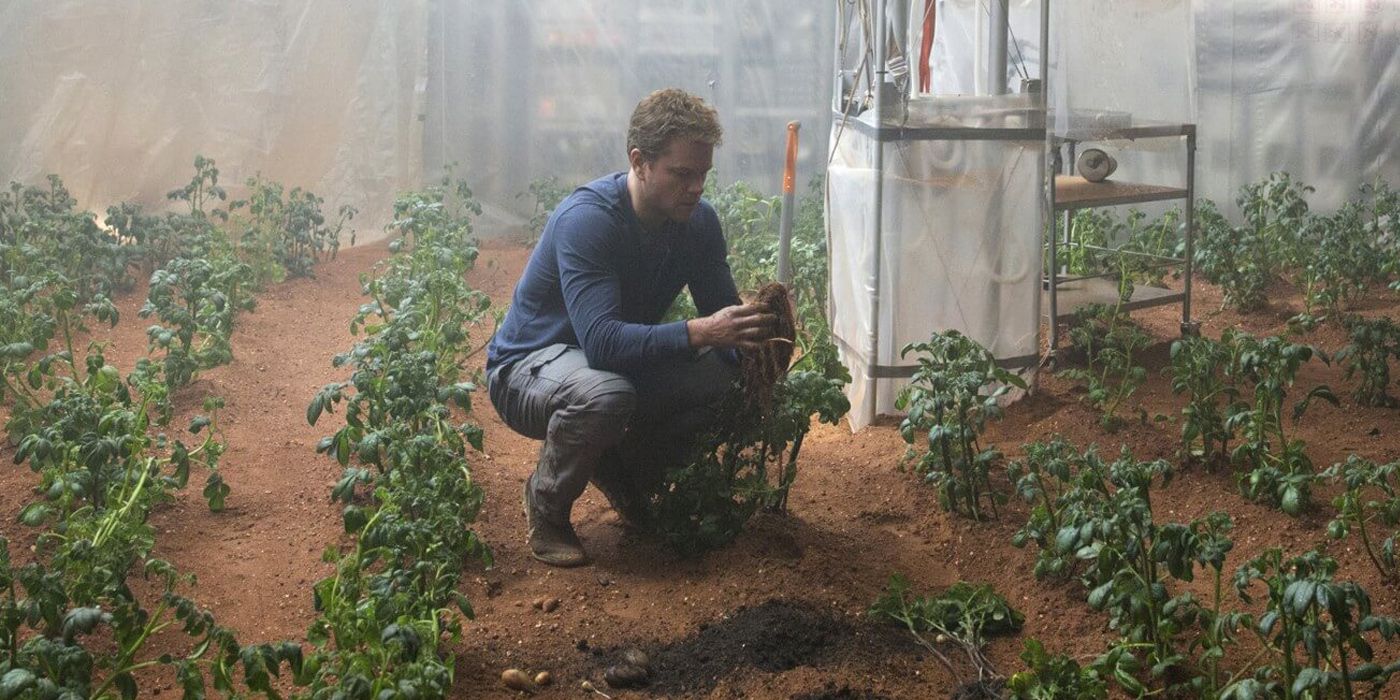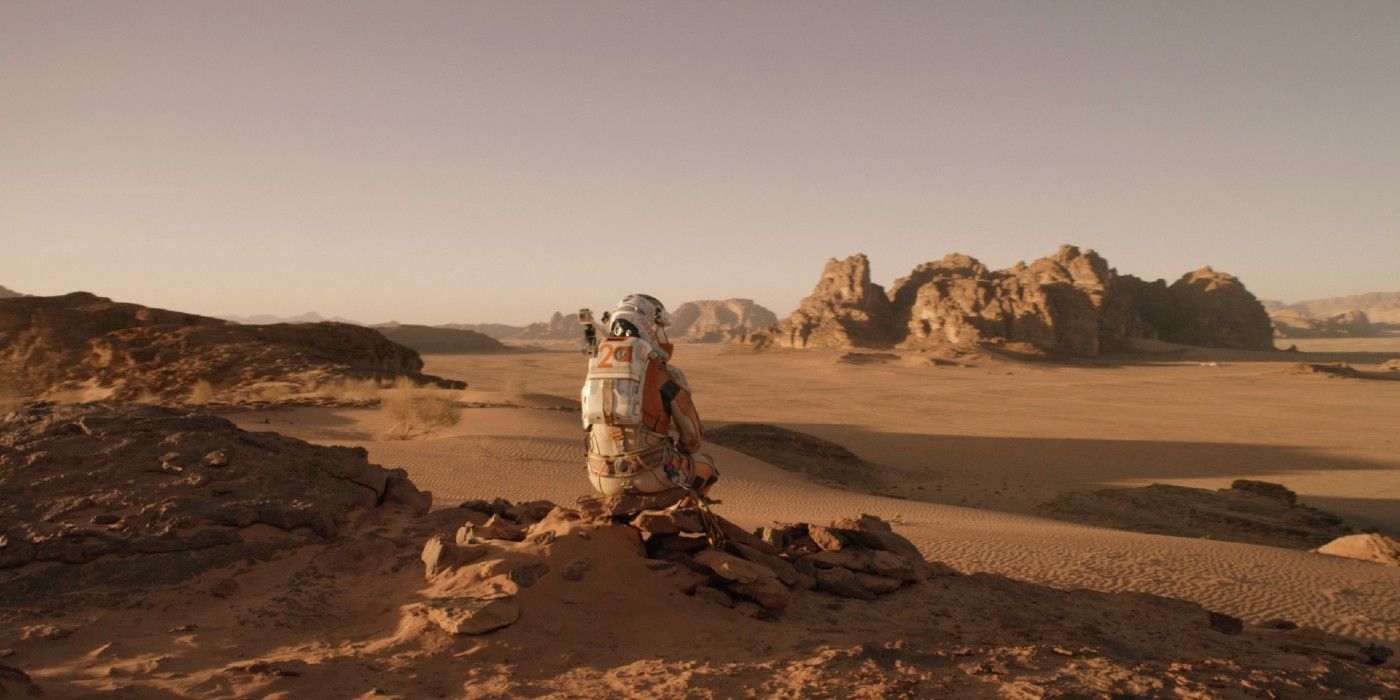The Martian is one of those sci-fi films that appears to be highly-technical and factual to a regular person, but the flaws in its treatment of science would make a real NASA engineer roll their eyes. The amount of space travel and sci-fi movies produced every year suggests that audiences have a natural curiosity for the subject matter; that being said, Hollywood movies aren’t always scientifically accurate. Rather than making sure all of the math lines up, directors and producers tend to lean more towards creating an engaging action flick. This begs the question: are the events of The Martian scientifically accurate?
The Martian follows a group of NASA scientists studying Mars when they are hit by a massive storm, forcing the crew to evacuate the planet. In the process, Mark Watney (Matt Damon) is knocked away, tearing his spacesuit, and is presumed dead by the crew. Watney is alive, however, and must figure out a way to contact mission control and survive on meager supplies until the next scheduled mission to Mars four years later.
The Martian was directed by iconic director Ridley Scott who is no stranger to the genre. The movie is an adaptation of Andy Weir's novel of the same name. When it comes to The Martian, the technology and situation was based on reality, but Scott took liberties with some aspects of the story.
Mars Habitation
The astronauts in The Martian, and especially Mark Wattney, live in a habitation module known as the "Hab." It’s an inflatable structure that is fully capable of supporting a small group of people on the Martian terrain. The Hab also has breathable air, a recycled water filtration system, and Earth-like atmospheric pressure. In the film, the Hab quickly becomes Wattney’s home away from home, and is the only thing protecting him from the harsh elements.
Different types of modules are being used and tested by NASA today, much like the one portrayed in The Martian. Today, NASA engineers are testing a module known as HERA, which simulates what it would be like for humans living in deep space (via Nasa). The astronauts are able to live in the artificial environment for 14 days, living and working as they would be on a real mission. Soon, NASA hopes to extend the simulation to 60 days to better understand how people react to such constrained surroundings. So the Hab in the movie isn’t that far off from reality.
Space Travel
When escaping Mars in The Martian, the crew uses a Mars Ascent Vehicle to get to the Hermes spacecraft, orbiting around the planet. The MAV takes methane from the Martian atmosphere and converts it into fuel, propelling the craft to terminal velocity. It then docks on the Hermes, which takes the astronauts back to Earth. The Hermes itself rotates in order to create artificial gravity and can support a small group of people.
In reality, spacecraft like this don’t exist and it will be some time before they do. The logistics of a mission to Mars are extremely complicated, and NASA admits it’s not entirely sure of how to combat all of the problems at the moment. While NASA has sent rovers to Mars, sending people and sustaining their lives for an extended period of time is inherently tricky. That, coupled with the fact that Mars has only 30% of Earth’s gravity, means that space travel in The Martian is still just science-fiction.
Survival
The Martian is the perfect example of Murphy’s law: anything that can go wrong, will go wrong. Watney almost dies from a tear in his suit, the crew leaves him stranded on Mars, he struggles to make contact with Earth, the Hab malfunctions, and he uses up his rations so he can’t get enough nutrients. It’s an absolute whirlwind, but somehow Watney pulls it off and survives to the end of the movie.
While audiences like to think that an outcome like this is totally possible, it’s highly unlikely that Watney, or any trained astronaut, would survive something like this. Just one of those situations would be enough to kill even the most highly-skilled astronaut, especially one that had to fix the issues alone. In the case of The Martian, Hollywood gave moviegoers a classic-but-unrealistic happy ending.
Growing Food
After the rest of the crew evacuates the planet leaving Watney behind, he is forced to fend for himself and prepare to survive for an additional four years. The Martian shows Watney having to ration out his food stores, but he soon realizes he doesn’t have enough to make it. Watney devises a plan, turning the Hab into a giant terrarium by covering the floor with Martian soil and planting potatoes.
Surprisingly, something like this could actually work. On the International Space Station today, scientists are a growing lettuce in a plant growth system known as Veggie. They’re also continually running tests and experiments to discover what other nutritional plants astronauts would be able to grow for long-duration space travel. One of those experiments in 2017 showed that potatoes really can grow in an extreme environment like Mars (via Business Insider).
Psychological Impact
In The Martian, one of the biggest challenges Watney faces is the severe isolation. Throughout the movie, he is forced into a scenario with little to no communication from Earth. He spends four whole years in solitude and it takes a toll on his mental and emotional well being. Watney’s solitary confinement, coupled with the added stress that he could die at any moment, pushes him to his limits.
As NASA studies the structural integrity of different habitation modules, they’re also studying the astronauts' behavior. Much like the crew on a submarine, astronauts must live in isolation and in extremely cramped quarters, which isn’t always easy to deal with. Before anyone gets sent to space for long missions, NASA rigorously tests the participants’ ability to handle these scenarios in simulations, selecting only the best possible candidates. Watney may have passed his tests in The Martian, but the way he reacts to isolation of that magnitude is still up to the director’s discretion.
-
The Martian does its best to stay factual, which gives the movie an authoritative feel. Audience thought what they were watching seemed plausible and could actually happen. Unfortunately, reality isn’t quite there yet and won’t be for years to come. But science-fiction from the 1930s has more or less become science-fact in today’s world, so who really knows what the future has in store.

